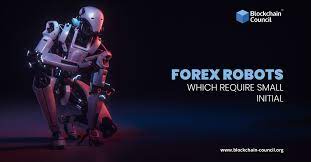In the ever-evolving landscape of financial markets, technological advancements continue to revolutionize the way traders operate. One such innovation that has gained significant traction in recent years is the forex robot, also forex robot as an expert advisor (EA). These automated trading systems have garnered attention for their potential to execute trades with precision and speed, promising increased efficiency and profitability for traders. Let’s delve deeper into the realm of forex robots to understand their functionalities, benefits, and limitations.
What are Forex Robots?
Forex robots are software programs designed to automate the process of trading in the foreign exchange (forex) market. Utilizing algorithms and predefined parameters, these robots can analyze market conditions, identify trading opportunities, and execute trades on behalf of the trader. They operate based on technical indicators, price action patterns, or other quantitative analysis methods, aiming to capitalize on market movements and generate profits.
How Do Forex Robots Work?
Forex robots operate on a set of predefined rules and parameters programmed by developers or traders. These rules govern the criteria for entering and exiting trades, risk management strategies, and other aspects of trading. The algorithms embedded within the robot continuously monitor the market, scanning for opportunities that meet the specified criteria.
Once a trading signal is generated, the forex robot can execute trades automatically without human intervention. This automation eliminates the need for traders to monitor the markets constantly, enabling them to participate in trading activities even when they are not actively present.
Benefits of Forex Robots
- Emotion-Free Trading: One of the significant advantages of forex robots is their ability to eliminate emotional biases from trading decisions. Unlike human traders who may be influenced by fear, greed, or other emotions, robots make decisions based solely on predefined algorithms and data analysis.
- 24/7 Trading: Forex robots can operate round the clock, allowing traders to capitalize on opportunities in different time zones and markets. This continuous operation ensures that no trading opportunity is missed due to human limitations such as sleep or time constraints.
- Backtesting and Optimization: Before deploying a forex robot in live trading, traders can backtest the algorithm using historical market data. This process allows them to evaluate the performance of the robot under various market conditions and optimize its parameters for better results.
- Speed and Efficiency: Forex robots can execute trades with lightning speed, enabling them to capitalize on fleeting market opportunities that may be missed by manual traders. This speed can be particularly advantageous in high-frequency trading environments.
- Diversification: By deploying multiple forex robots with different strategies or parameters, traders can diversify their trading portfolio and reduce risk. Each robot operates independently, offering a diversified approach to capturing profits across various market conditions.
Limitations and Considerations
While forex robots offer several benefits, it’s essential to acknowledge their limitations and consider certain factors before using them:
- Market Volatility: Forex robots may struggle to adapt to sudden changes or extreme volatility in the market. Unexpected events or news announcements can lead to erratic price movements that may not be adequately accounted for in the robot’s algorithm.
- Over-Optimization: Excessive optimization of a forex robot’s parameters based on historical data can lead to overfitting, where the algorithm performs well in backtests but fails to generalize to live trading conditions.
- Technical Issues: Like any software, forex robots are susceptible to technical glitches or malfunctions. Traders should monitor their robots closely and be prepared to intervene in case of any unexpected issues.
- Dependency on Market Conditions: The effectiveness of a forex robot may vary depending on the prevailing market conditions. A strategy that performs well in one type of market (e.g., trending or ranging) may struggle in another, requiring periodic adjustments or reoptimization.
- Lack of Intuition: While forex robots excel at executing predefined rules and algorithms, they lack the intuition and discretion of human traders. Certain market conditions or anomalies may require human judgment to interpret accurately.
Conclusion
Forex robots represent a powerful tool in the arsenal of modern traders, offering automation, efficiency, and potential for enhanced profitability. By harnessing the power of algorithms and technology, traders can streamline their trading processes and capitalize on market opportunities with greater precision and speed.
However, it’s essential to approach forex robots with caution and understanding of their limitations. Successful implementation requires thorough testing, optimization, and ongoing monitoring to ensure consistent performance and mitigate risks. Ultimately, while forex robots can augment trading capabilities, human oversight and judgment remain indispensable in navigating the dynamic landscape of financial markets.

More Stories
Talaria X3: The Ultimate Electric Off-Road Bike Redefining Adventure, Agility, and Eco-Friendly Performance for Modern Riders
The Fascinating Evolution and Appeal of Slot Games
The Evolution and Allure of Slot Games: From Mechanical Reels to Digital Thrills